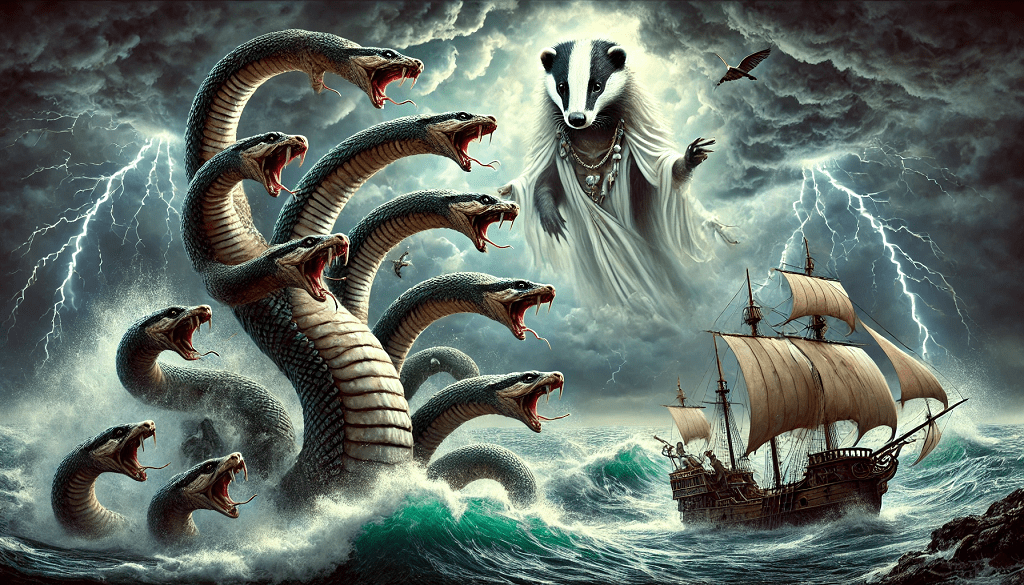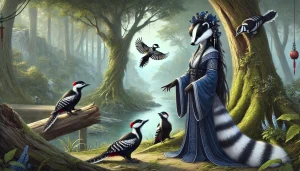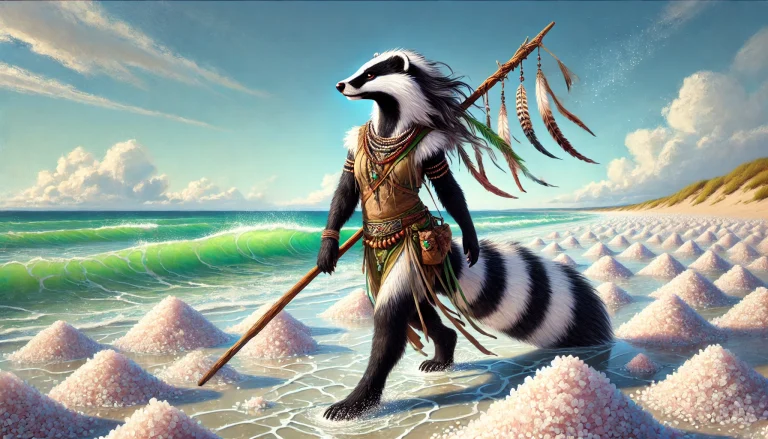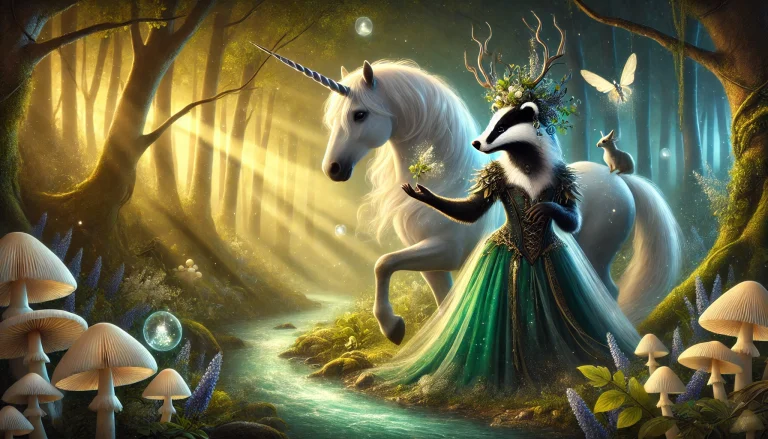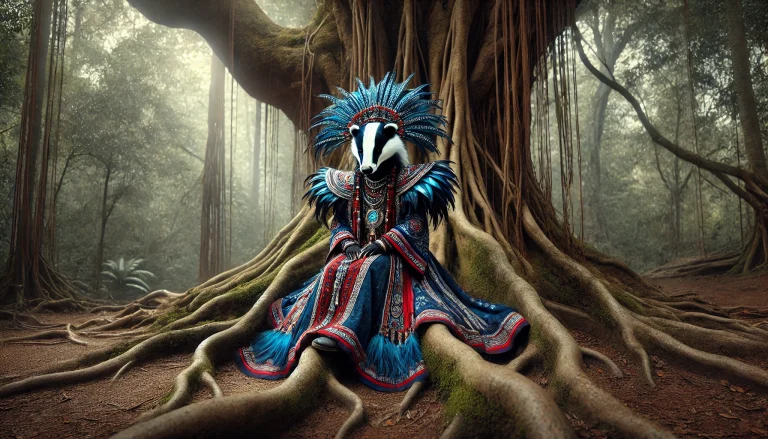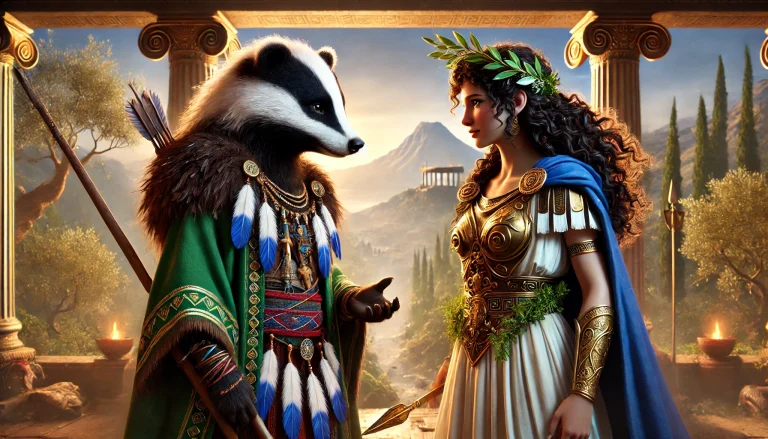This article explores the fascinating and frightening legend of Scylla, one of the most feared monsters in Greek mythology. Originally a beautiful nymph, Scylla was transformed into a horrible creature with six serpent heads and twelve legs, living in a cave on the edge of the strait between Italy and Sicily. She was known for devouring sailors who dared to pass through her territory,
Scylla symbolizes the inevitable dangers and difficult choices we all face. The article delves into the origin of the legend, its representation in Homer's "Odyssey", and the symbolism behind this mythical figure who continues to haunt and inspire throughout the centuries.
Index
Introduction
Presentation of the legend: Scylla, one of the most fearsome creatures in Greek mythology, is a sea monster that has terrorized sailors for centuries. The story of Scylla is part of Homer's "Odyssey", where she represents one of the many challenges faced by Odysseus on his long journey home.
The Origin of Scylla
History and Lineage: In Greek mythology, Scylla was originally a nymph of great beauty, the daughter of Phocis, a sea god, and Hecate, the goddess of magic and crossroads, or Crateis, depending on the version of the myth. Living on the coast of Italy, she was courted by many, but kept her purity and stayed away from suitors.
Transformation and Damnation: Scylla's transformation into a monster is attributed to different causes in the versions of the myth. The most famous involves the sorceress Circe, who fell in love with the god Glaucus. When Glaucus fell in love with Scylla and Circe didn't reciprocate, the sorceress, consumed by jealousy, poured a magic potion into the water where the nymph was bathing. This transformed her into a horrible monster with twelve legs and six heads, each with mouths full of sharp teeth. Another version of the myth suggests that it was Amphitrite, Poseidon's wife, who cast the curse out of jealousy.
The Appearance and Symbolism of Scylla
Physical Description: Scylla is described as a grotesque and terrifying being. In the "Odyssey", Homer depicts her with twelve tentacle-like legs, six serpent heads, and mouths that could devour anything they came across. Its upper body was monstrous, while its lower body remained submerged in the depths, making it even more mysterious and frightening.
Hidden in a cave on the edge of a dangerous strait, she would mercilessly attack any ship that dared to pass through her domain, devouring six sailors in one go with her six mouths.
Symbolism: Scylla symbolizes the inescapable dangers and unavoidable horrors that humanity faces. She also represents the idea of sacrifice and the difficult choices that often arise in life. In the context of the "Odyssey", she is the emblem of the unforeseen challenges and inevitable losses that arise during any great journey.
In addition, Scylla can be seen as a personification of the fear of the unknown and of indomitable natural forces, such as the storms and whirlpools that threatened ancient Greek sailors.

Scylla and Odysseus: The Deadly Encounter
The Sacrifice of Odysseus: During his journey, Odysseus is forced to choose between passing by Scylla or Charybdis, another mortal creature. He chooses to face the former, knowing that he will lose six of his men. Scylla quickly devours the sailors, and Odysseus can only move on, carrying the weight of that loss.
The Strait of Messina: Reality and Myth
Geographic Connection: The Strait of Messina, where Scylla and Charybdis supposedly lived, is a real place between Italy and Sicily. For centuries, sailors have feared these waters, and the myth of Scylla probably arose to explain the natural dangers of this passage.
Final Thoughts
The Legacy: The legend of Scylla is more than just a maritime horror story; it is a powerful reminder of the dangers we cannot avoid and the difficult decisions we are forced to make. Even though she was the daughter of gods, Scylla was not spared a cruel fate, showing that not even divine lineage can protect someone from the capricious forces of destiny.
This tragedy reflects a recurring theme in Greek mythologythe fragility of existence, where power or origin do not guarantee a path free of suffering or transformation. Scylla, who started out as a beautiful nymph, was transformed into a monster due to envy and jealousy, highlighting how the actions of others can irrevocably alter our lives.
In the end, the story of this nymph turned monster teaches us about the inevitability of suffering and loss, but also about the resilience needed to carry on, even in the face of the most daunting challenges. Like many Greek legends, Scylla's makes us reflect on the human condition (and even the divine condition), reminding us that, regardless of our origin or power, we are all subject to the uncertainties and trials of life.
I'm passionate about magic and spirituality, always looking for new knowledge about rituals, energies and the mystical universe. Here, I share magical practices and spiritual tips for those who want to connect more deeply with themselves and the world around them, all in a light and accessible way.

